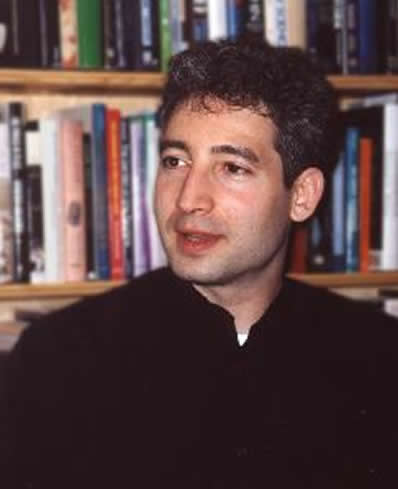Humans hunger to know how the universe works. Physicists are beginning to answer some of the most fundamental questions about the nature of nature. But why should physicist have all the fun as nature's mysteries are beginning to be understood? Brian Greene, himself a physicist and mathematician, wants to share the excitement with non-technical people. Just don't get sidetracked by the physics and the mathematics, he advises. Follow the logic but not the details of the math and physics and practically anyone can appreciate the beauty of our elegant universe.
Brian Greene is a professor of physics and mathematics at Columbia University. He earned degrees at Harvard and Oxford Universities and taught at Cornell before moving to Columbia. Credited with his own ground breaking discoveries in superstring theory, he is committed to general audiences sharing the delight physicists take in solving nature's toughest puzzles. Professor Greene offers non-technical people a chance to grasp the basics of superstring theory, hidden dimensions and the quest for the ultimate theory in his book, The Elegant Universe.
The search for the Theory of Everything has whetted the appetites of scientists throughout the twentieth century, including Albert Einstein. But they just didn't have enough information to solve the problem, according to Dr. Greene. Until recently. Now a century of experiments and observations have helped break down the barriers to understanding the most fundamental workings of nature. It starts with incredibly tiny loops of vibrating energy called strings. Strings make up quarks and electrons, from which everything else in the universe is made. So can a string do all that? Think of how the variation in vibrations among violin strings create different sounds. Now compare that to these tiniest of strings, whose varying vibrations create profoundly different results which -- ultimately -- determine the shape of the universe.
If you feel as if you are Alice in Wonderland listening to talk of strings and superstrings, you're in good company. An entirely new language is gradually being created with which to understand what experiments are beginning to confirm. It's taken us a hundred years to begin to grasp the basics of Einstein's special and general relativity and even Einstein was uncomfortable with quantum mechanics and the probability that came with it.
But gradually, new ways to think are emerging among theorists and mathematicians. Experimenters have lagged behind because our technical ability to probe the very smallest and very largest phenomenon has impeded us. But even that is changing as higher and higher speed accelerators are built. And cosmologists are looking to the Big Bang as the ultimate experiment. Physicists and mathematicians, long at odds, are beginning to take inspiration from each other. They are also beginning to embrace a new science in which two apparently contradictory theories can, in fact, be complimentary. And yes, some of it seems very, very weird.
When you hear world class physicists talking about the music of the spheres, don't tune them out. People like Brian Greene are committed to helping us all hear that music, grasp what is becoming more clear to physicists, cosmologists, and mathematicians alike as they plumb the very depths of nature's most closely held secrets.
Why is the universe the way it is? Today's scientists are finding answers. And you don't have to be a rocket scientist to share in the discoveries.
[This Program was recorded in Atlanta, Georgia, US.]
 |
Brian Greene
... string-theory physicist. Both a practitioner and teacher, Brian Greene is professor of physics and mathematics at Columbia University. He earned degrees from Harvard and Oxford University, where he was a Rhodes Scholar. Dr. Green is widely regarded for his own ground breaking discoveries in superstring theory. He lectures worldwide to both general and technical audiences and is the author of the very readable book The Elegant Universe: Superstrings, Hidden Dimensions and the Quest for the Ultimate Theory. |








